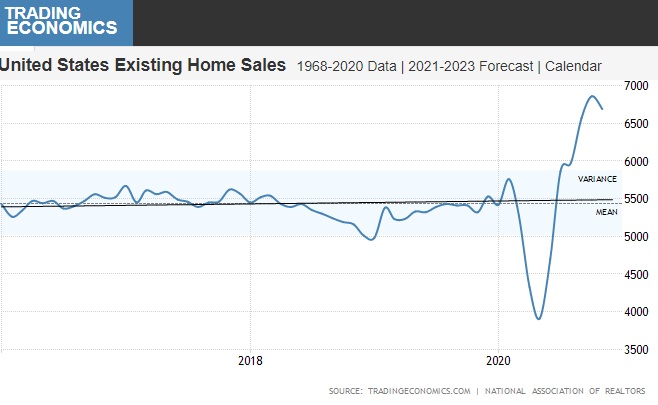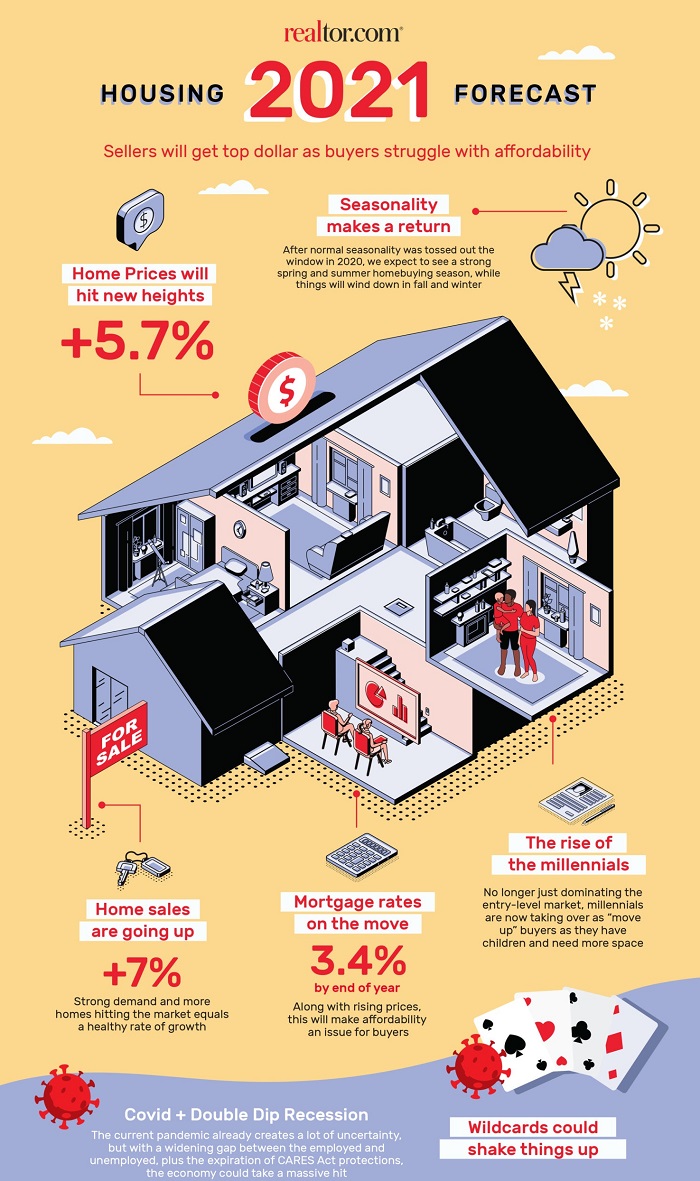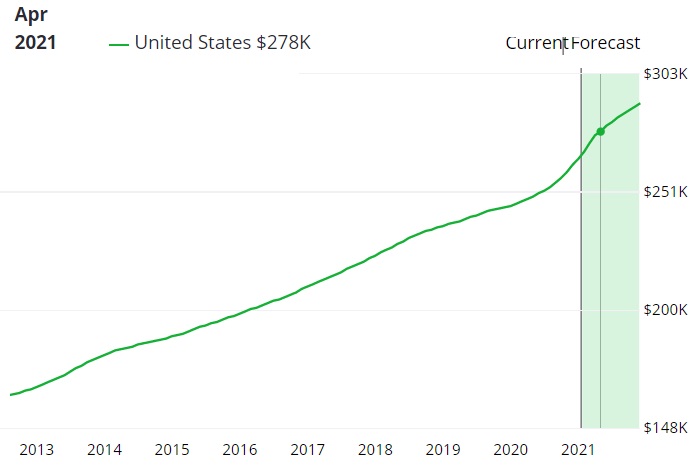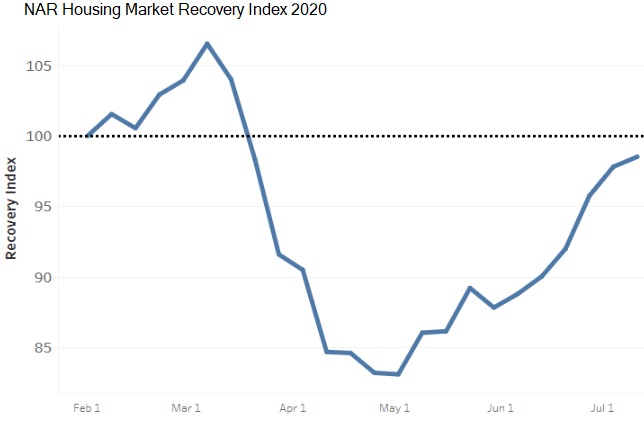Spring Housing Market Preview
Homebuyers are keen to visualize the housing market and home prices by April and over the next 6 to 8 months. Buyers realize the tight supply combined with economic recovery could price them out by April.
As the Covid 19 pandemic declines, a new US government takes the economic driver’s seat, and as the recovery grows aided by big stimulus money, we might see significant price growth. The effect of pent up demand and big stimulus in 2020, suggests the same outcome will play out in spring 2021.
Over the last 6 months, house supply has dwindled while condos and apartments have been abandoned.
One of the oddities for the 2020 housing market was that although prices rocketed to all-time highs, fewer buyers were participating in it. Yet, 2020 started off really strong and if not for Covid 19 disease, it may have been a record sales year since demand was strong and construction was unfettered up until the shutdown.
Pending sales in December were down, reflecting political, economic and health worries, and this pause may last 3 months and end abruptly in the spring.
National Association of Realtor Forecast for 2021:
- it will be a sellers market
- home prices rise 5.7%
- home sales grow 7%
Interest in the housing market plummeted during 2020, but this spring, we could begin to see a resurgence.
Certainly, home prices are poised to rise further, but this is due to record low interest rates and limited supply. The pandemic made houses a much more attractive investment, almost mandatory for those fleeing Covid 19 outbreaks in the cities and who needed lots of room and extra office space.
Last year’s sales growth was driven by pandemic dislocation, low supply, panic selling, and stimulus money. The rise in sales shown in the chart was unprecedented, and the dip of recent is a seasonal drop. We’re in a long bull market which suggests this line on this chart will soar more in 2021.
Because the vaccinations and surge of new Covid 19 variants is a tough variable to forecast, predicting when the sales breakout will happen isn’t easy. The former Prez looked eager to get money out to Americans, to get the vaccines distributed and fuel a strong economic recovery. So why would we expect a delay in spring house buying?

But as the Covid 19 vaccinations take hold in the tens of millions every month, businesses will slowly reopen. And with the coming of warmth and sunshine, the virus will ease off further. What could be missing for the first time since March of last year, is the fear of the disease.
The current US government has announced a $1.9 trillion immediate stimulus package. That money fusing throughout the economy will ease real estate investors’ minds, along with mortgage lenders who likely have expected massive foreclosures and unemployment.
Unemployment claims soared again last month, but by June, the jobless rate will fall significantly.

As Realtor.com’s 2021 forecast shows, the market will return to normal seasonality, and the cyclicals are regaining power in the stock market. It’s all about returning to normal economic activity this year. NAR says prices will rise 5.7% this year and home sales will rise 7%. The only negative will be rising mortgage rates, and NAR boldly forecasts a rise to 3.4% by year-end.
Corelogic’s forecast however is for only 2.5% price growth by next November.
Zillow is forecasting a 10.3% price rise by next September, and an average rise of $9,000 in the next 3 months.

Freddie Mac forecasts home sales to decline slightly to 6.1 million in 2021. Of course, they realize home construction will not be strong this spring, so they feel it will pick up in the 2nd half. They believe house prices will rise only 2.6%.
Housing Supply
NAR’s recent reports, even though the market has quietened, still show strong price growth and sales versus last year.
Nar reports that:
- median listing prices rose in the last 4 weeks by 13.6% compared to the same period last year
- new listings fell 13% versus one year ago
- total active inventory dropped 41% on average
- time on market was 12 days less than one year ago


This data would tend to indicate a huge jump in housing prices by June. If there is a strong moderating influence, they’re not talking about it.
Housing Demand in 2021
Housing experts believe there remains pent up demand from the pandemic recession. Homebuyers of all ages have held off buying given tremendous insecurity. Americans saved money and invested in the stock market. While there is minimal risk of a stock market crash, homebuyers will likely use their savings and stock equity as a downpayment for a home, if a home is available and they can afford it.
In some states, the population has shrunk, which means that there will be fewer buyers, yet in states that grew during the pandemic, we could see bidding wars for properties. California, Illinois, Ohio, Pennsylvania, and New York lost residents, while Arizona, Florida, Texas, South Carolina, Colorado, Georgia, and North Carolina gained.
NAR believes those between 20 and 40 years of age will be wanting to buy a home and this help put upward pressure.
| US City Metro | 2021 Sales Growth % y/y |
2021 Price Growth % y/y
|
| San Jose-Sunnyvale-Santa Clara, CA | 10.80% | 10.80% |
| Seattle-Tacoma-Bellevue, WA. | 8.90% | 9.70% |
| Boise City, ID | 9.80% | 9.10% |
| Fresno, CA | 8.90% | 8.50% |
| San Francisco-Oakland-Hayward, CA | 1.30% | 8.40% |
| Bridgeport-Stamford-Norwalk, CT | 9.70% | 7.80% |
| Columbus, OH | 10.30% | 7.60% |
| Tampa-St. Petersburg-Clearwater, FL | 8.70% | 7.50% |
| Sacramento–Roseville–Arden-Arcade, CA | 17.20% | 7.40% |
| Los Angeles-Long Beach-Anaheim, CA | 10.00% | 7.30% |
| Miami-Fort Lauderdale-West Palm Beach, FL | 3.70% | 7.10% |
| Phoenix-Mesa-Scottsdale, AZ | 11.40% | 7.00% |
| Washington-Arlington-Alexandria, DC-Va.-Md.-W. VA | 5.20% | 6.70% |
| North Port-Sarasota-Bradenton, Fla. | 10.30% | 6.60% |
| El Paso, TX | 10.60% | 6.40% |
| Portland-South Portland, ME | 2.00% | 6.40% |
| Deltona-Daytona Beach-Ormond Beach, FL | 5.40% | 6.30% |
| Atlanta-Sandy Springs-Roswell, GA | 3.60% | 6.20% |
| Baltimore-Columbia-Towson, MD | 4.80% | 6.20% |
| Colorado Springs, CO | 5.40% | 6.20% |
| Portland-Vancouver-Hillsboro, OR WA | 8.10% | 6.20% |
| Stockton-Lodi, CA | 8.20% | 6.10% |
| Milwaukee-Waukesha-West Allis, WS | 6.30% | 6.00% |
| Orlando-Kissimmee-Sanford, FL | 10.10% | 5.80% |
| Boston-Cambridge-Newton, MA NH | 5.40% | 5.70% |
| Knoxville, TN | 7.90% | 5.70% |
| Salt Lake City, UT | 7.50% | 5.70% |
| Spokane-Spokane Valley, WA | 3.80% | 5.60% |
| Oxnard-Thousand Oaks-Ventura, CA | 12.50% | 5.50% |
| Providence-Warwick, R.I.-Mass. | 4.50% | 5.50% |
| Riverside-San Bernardino-Ontario, CA | 12.40% | 5.50% |
| San Diego-Carlsbad, CA | 11.30% | 5.50% |
| Columbia, S.C. | 8.10% | 5.40% |
| Denver-Aurora-Lakewood, CO | 12.50% | 5.40% |
| Charlotte-Concord-Gastonia, N.C.-S.C. | 13.80% | 5.20% |
| Las Vegas-Henderson-Paradise, NV. | 12.00% | 5.20% |
* Above data courtesy of Realtor.com®
A shortfall of 4 million homes as demand grows means prices will rise. Of course, builders will be doing record-breaking construction (building permits rose 12.2% YoY in November) yet they’ll find inflation, materials (building materials prices climbed 5.4% in 2020) and labor shortages (81% of construction businesses can’t fill positions with qualified skilled labor) cropping up in 2021 and 2022.
There are still 40% of construction workers not working due to the recession however, by April, many of them may be back working and buying houses themselves.
Florida, Texas, and Georgia are where the most building permits are being issued (according to eyeonhousing report).
The U.S. personal savings rate (% of disposable income that households save) rose strongly from 12.9% in March 2020 to 33.6% in April 2020 (+ 160.5%), an effect of the pandemic, and reduced spending. With extra stimulus and planned infrastructure spending, there will plenty of money to use to buy homes.
Lower income earners and Millennials may have less savings, but they could be accessing the bank of mom and dad to buy a house this year.
And the increase to the minimum wage in the US could help in creating more rental housing as the economy returns. Landlords suffered during the pandemic however, by June, rent payments may return to normal.
NAR expects strong price growth in San Jose California, Seattle Washington, while Charlotte NC, Denver CO, Harrisburg PA, Kansas City, Los Angeles CA, Las Vegas NV, Riverside CA, Phoenix AZ, Dallas TX, and Columbus OH, will see the highest sales growth.
Based on available data, and reports from the major research providers, that demand for homes, limited supply, slowed construction over winter, and current unusual price rises, that the spring housing market will be hot.
Take a look at the full real estate housing market report.
Home Equity Line of Credit | Home Equity Rising | Reverse Mortgages | California Housing Market | Housing Market 2023

